La Dispensa: Pasta Sauces
Italian Pasta Sauce Tips:Italians are traditionalists, they have certain pastas to pair with certain sauces.
In the April post for La Dispensa, we first explored pasta in Italy. Now, we will explore sauces in more depth.
Don’t mess with Italians and their pasta, or someone will report you to the Italian food police.
Never break your pasta
Don’t cut with a knife.
Never seen anyone in Tuscany use a spoon to roll the pasta to eat.
Alfredo sauce has no cream.
Regional specialties exist all over Italy, and rules might change. A Tuscan may not know what someone in Calabria eats.
I think everyone loves Roman specialties. Carbonara, Cacio e Pepe, and Amatriciana sauces are everywhere. The garlic, olive oil chili pasta, Aglio, Olio, and Peperoncino, is the base for many quick sauces.
A soffritto: minced onion, carrot, and celery is the base for most slow-cooked tomato based meat sauces.
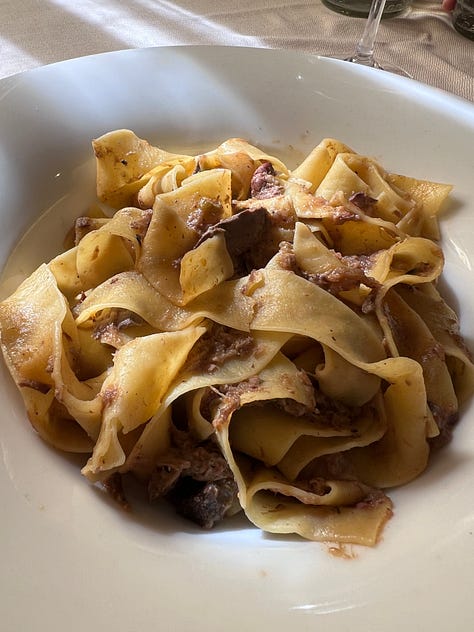
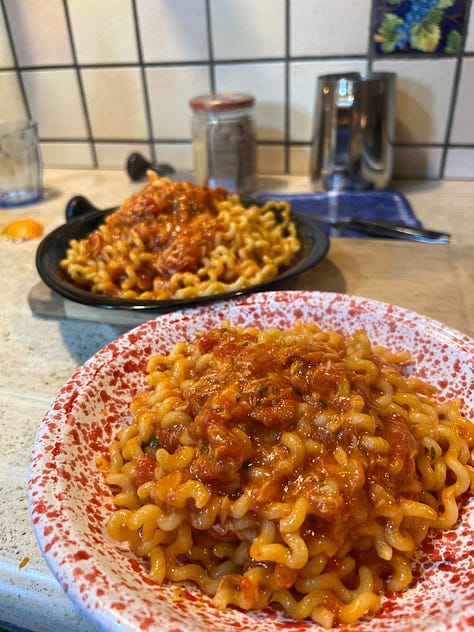
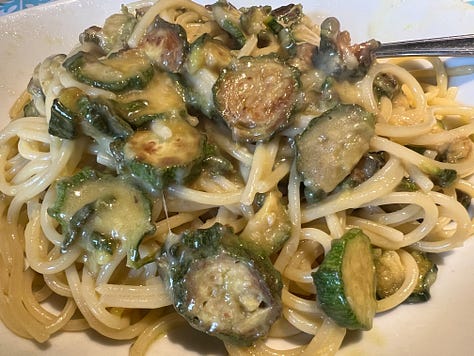

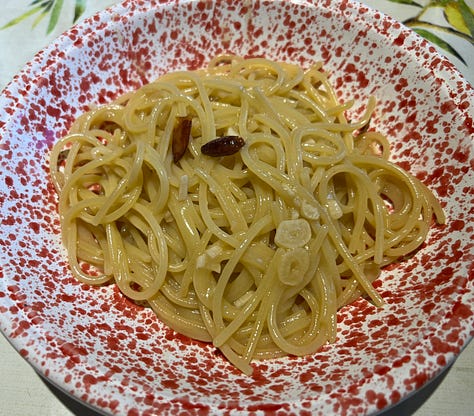
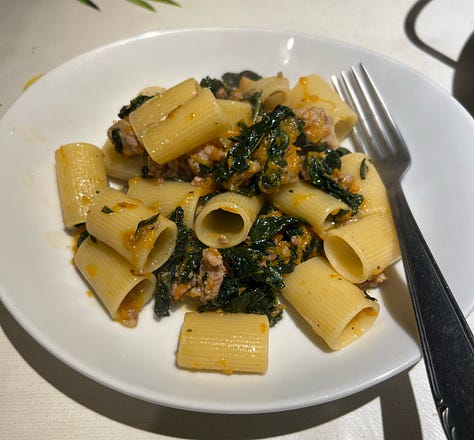
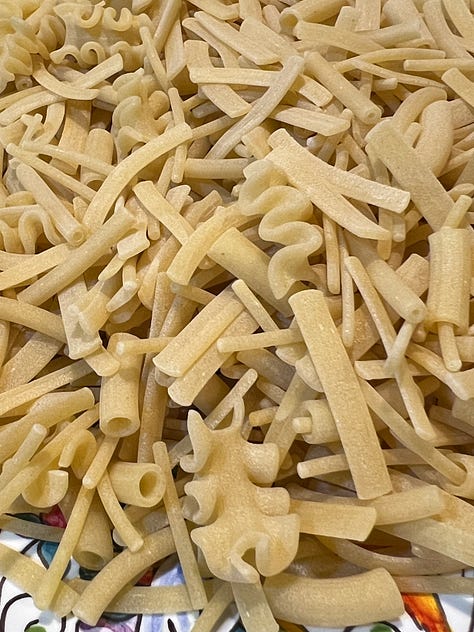
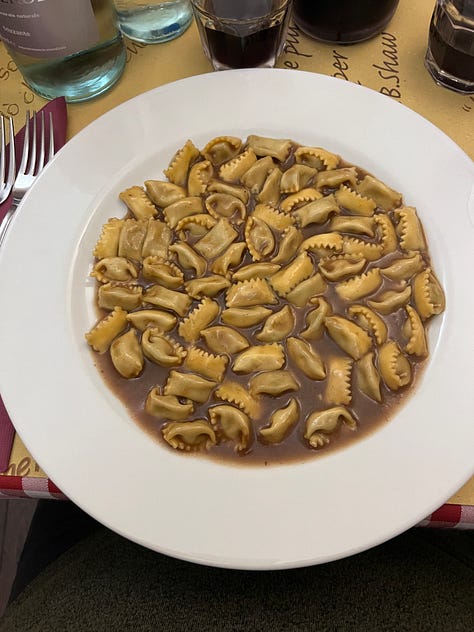
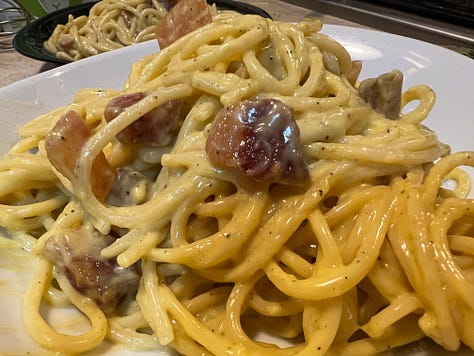
Spaghetti is probably the most common pasta, along with penne. The penne pasta comes with or without ridges. I remember during COVID, plain penne remained on the shelf. Sauce doesn’t stick to them so they are not a favorite choice of anyone anymore. I think of them as a cheap trattoria-style pasta, often overcooked.
Here are some of the sauces traditionally served with spaghetti
When making choices for what pasta to serve with what sauce, Italians do have preferences.
One of my girlfriends has a wall filled with pasta, kept in glass jars so she can see the shapes. When she gets home from work, she decides what sauce she wants and then picks the appropriate pasta for that sauce.
At one of the little trattorias in my village, they tell you the sauces of the day and then the choice of pasta, for example:
Sauces-Tomato, Ragu, Pesto, Carbonara
Pasta-Spaghetti, Bucatini,Rigatoni,Farfalle, Penne Rigati, Trenette.
There are over 600 shapes of pasta.
Mix and match.
Most Italians eat dry pasta daily. Cooked correctly, it’s easier to digest. Fresh pasta is saved for Sunday lunch or dining out for a special occasion.
I chose some of my favorite pastas and then suggest the shapes most people pair with them.
You can, of course, do any pairing. I have had a tough teacher, my Florentine husband, Andrea. He walked out of the room the first time I made an “American version” of what I thought Amatriciana sauce was. I learned quickly what to correct.
I always ask my husband what shape he wants when we have chosen the sauce.
My husband loves Farfalle, the butterfly shape. It’s not a personal favorite of mine, as the center pinch in the pasta tends to stay hard if it’s not cooked correctly or overcooked.
I am sharing some of the mother sauces for the paid subscribers. Join us on the journey to cook like an Italian.





